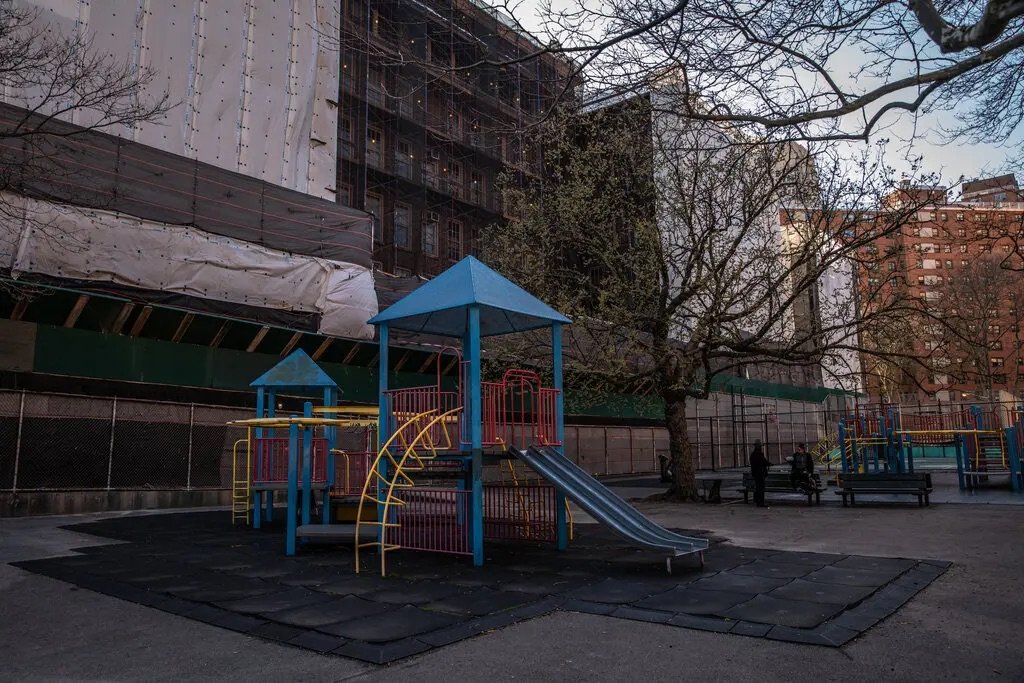Poverty Has Soared in New York, With Children Bearing the Brunt



Juan Arredondo for The New York Times
The share of New York City residents who could not afford basic essentials jumped dramatically in 2022, with one in four children living in poverty, a new report found.
After several years of declining poverty, New York City saw a sharp reversal in 2022, when it experienced its largest yearly increase in the poverty level in a decade.
Twenty-three percent of the city’s residents were unable to afford basic necessities like housing and food, according to a new report by a research group at Columbia University and Robin Hood, a large philanthropic organization. In 2021, that number was 18 percent.
The number of New Yorkers living in poverty, nearly two million in all, included one in four children.
The findings mark a major setback for New York City, where expanded government aid during the coronavirus pandemic had helped to counteract job losses, rising rents and high inflation.
With most of those programs ending, poverty has risen nationwide, but the surge has been especially clear in New York, said Christopher Wimer, the director of the Center on Poverty and Social Policy at the Columbia School of Social Work and a co-author of the report.
The national poverty rate in 2022 was 12.4 percent, up from 7.8 percent in 2021, the largest one-year jump on record, according to the United States Census Bureau. New York City’s rate was nearly double the national average, and there are signs that the gap is widening, Dr. Wimer said.
“It’s dispiriting,” Dr. Wimer said. “We’re going in the wrong direction.”
The biggest reason for the increase in poverty, both nationally and in New York, was the end of pandemic-era policies like the expanded child tax credit, enhanced unemployment insurance and cash payments that helped low-income families keep up with rising costs, Dr. Wimer said.
The steep rise in the number of New Yorkers living in poverty, which grew by 500,000 residents in 2022, underscores wide and longstanding disparities.
Black, Latino and Asian New Yorkers were roughly twice as likely as white residents to live in poverty, according to the report, and women were more likely than men to be unable to afford their basic necessities.
Christopher Wimer, a co-author of the report, said the end of pandemic-era aid had caused poverty in New York to surge.Credit...Dave Sanders for The New York Times
The report, part of a study that began in 2012, was based on surveys of a representative sample of more than 3,600 New York City residents that were conducted in 2022 and 2023.
The researchers used a metric called the supplemental poverty measure, which considers both income and noncash support like food stamps, as well as the local cost of living.
It differs from the Census Bureau’s official poverty measure, which only counts cash resources, but versions of the supplemental measure are also widely used by government officials, including in reports put out by the city.
In 2022, under the supplemental measure, a family of New York City renters made up of two adults and two children was considered below the poverty line if it made less than about $44,000. The poverty threshold for a single adult renter was $20,340.
A major reason for the disparities seen among those living in poverty is the lopsided jobs recovery, said James Parrott, the director of economic and fiscal policy at the Center for New York City Affairs at the New School.
Dr. Parrott, a former chief economist for New York City, was not involved with the poverty report, but broadly agreed with its findings.
“A lot of the progress made in the prepandemic years in reducing poverty and child poverty has been undone with diverging unemployment rates by race and ethnicity,” Dr. Parrott said.



